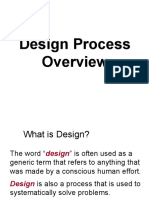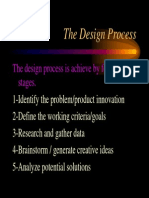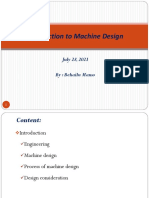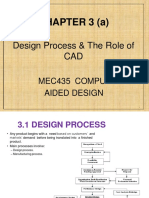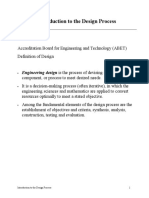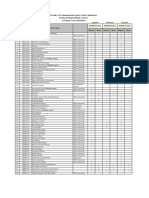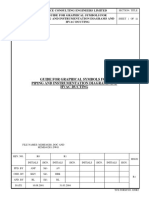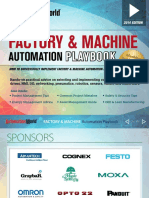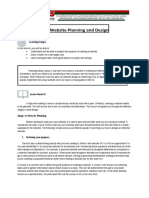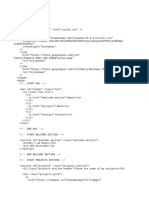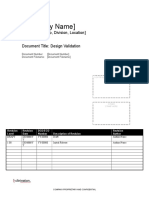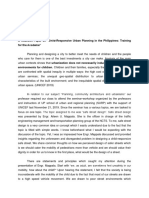0% found this document useful (0 votes)
63 views14 pagesSesi18-Design Process
The document outlines the design process, which consists of 3 stages:
1) Recognizing the problem and identifying needs and requirements
2) Generating and evaluating ideas through research, sketching, and modeling
3) Implementing the design through planning, manufacturing, and evaluating the final product in the field. It also discusses factors that make for a good design such as being fit for purpose, cost-effective, and satisfying requirements.
Uploaded by
Arief Dwi LaksonoCopyright
© © All Rights Reserved
We take content rights seriously. If you suspect this is your content, claim it here.
Available Formats
Download as PDF, TXT or read online on Scribd
0% found this document useful (0 votes)
63 views14 pagesSesi18-Design Process
The document outlines the design process, which consists of 3 stages:
1) Recognizing the problem and identifying needs and requirements
2) Generating and evaluating ideas through research, sketching, and modeling
3) Implementing the design through planning, manufacturing, and evaluating the final product in the field. It also discusses factors that make for a good design such as being fit for purpose, cost-effective, and satisfying requirements.
Uploaded by
Arief Dwi LaksonoCopyright
© © All Rights Reserved
We take content rights seriously. If you suspect this is your content, claim it here.
Available Formats
Download as PDF, TXT or read online on Scribd
/ 14








